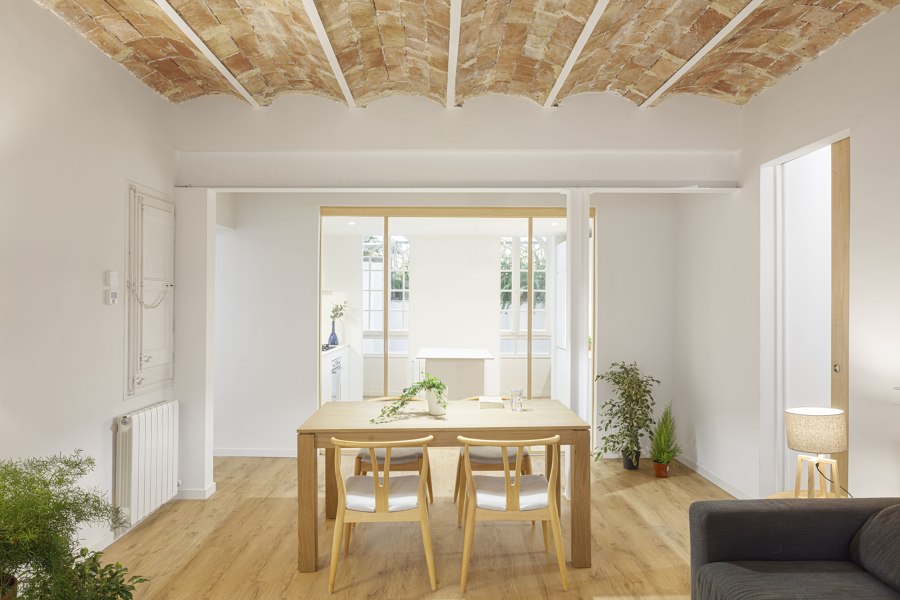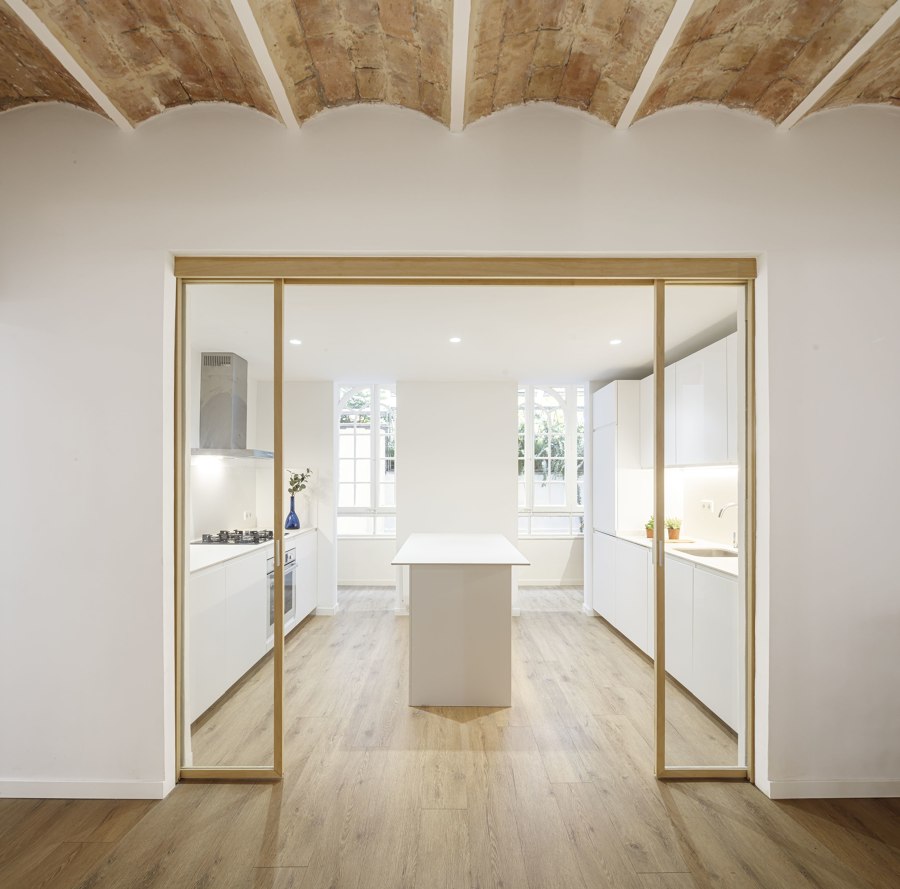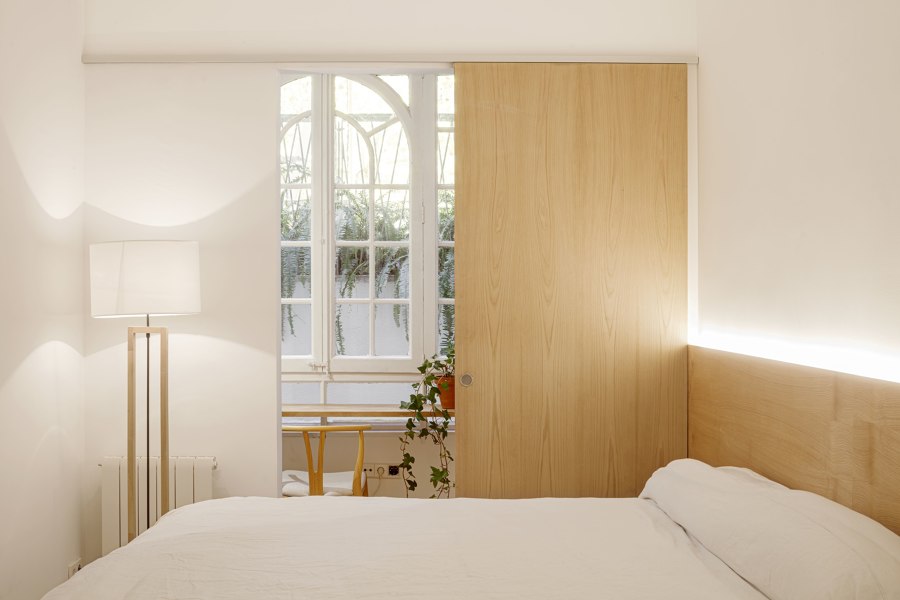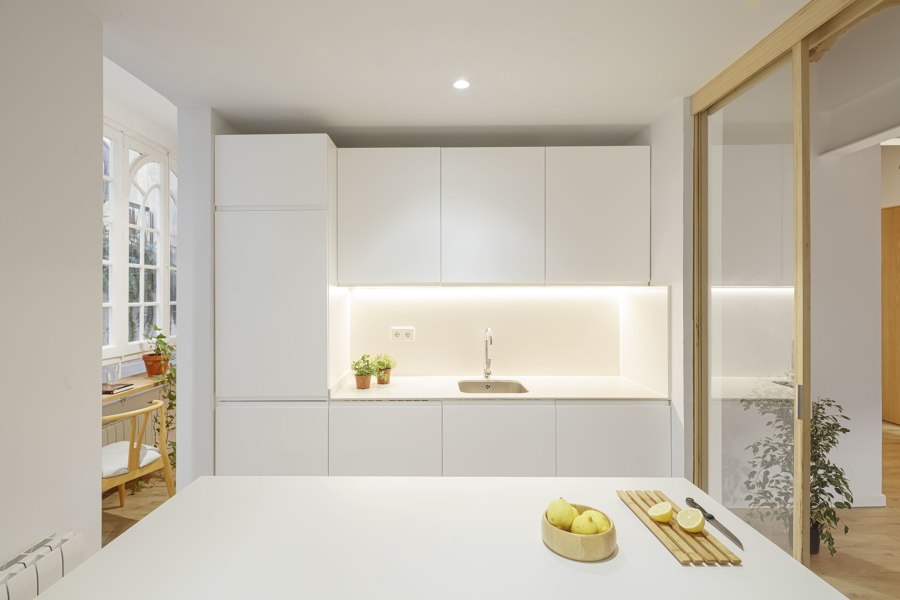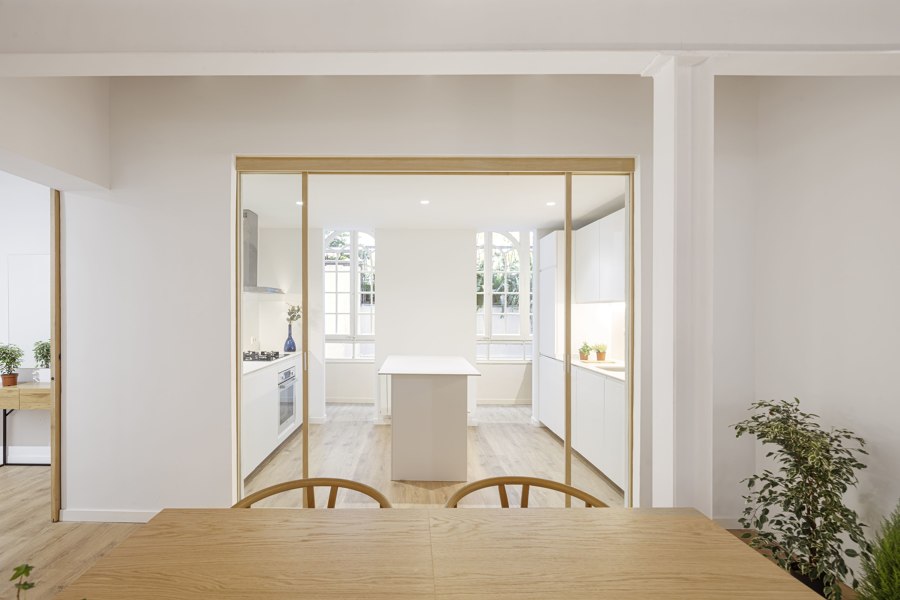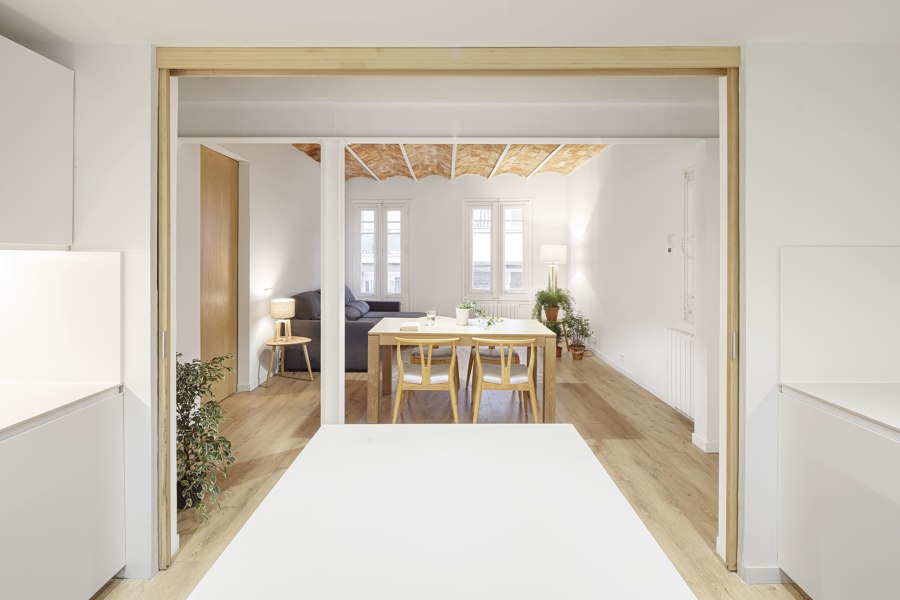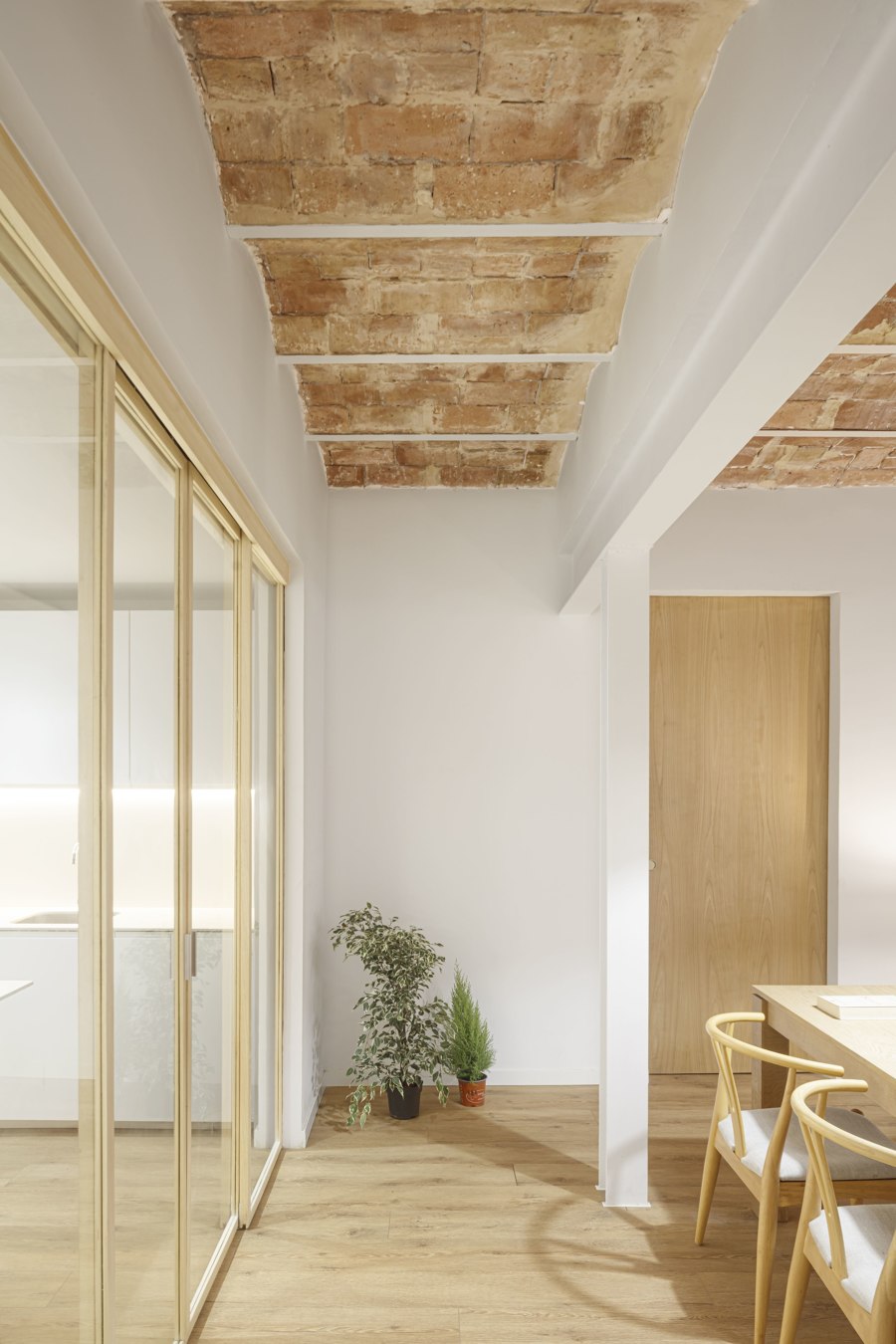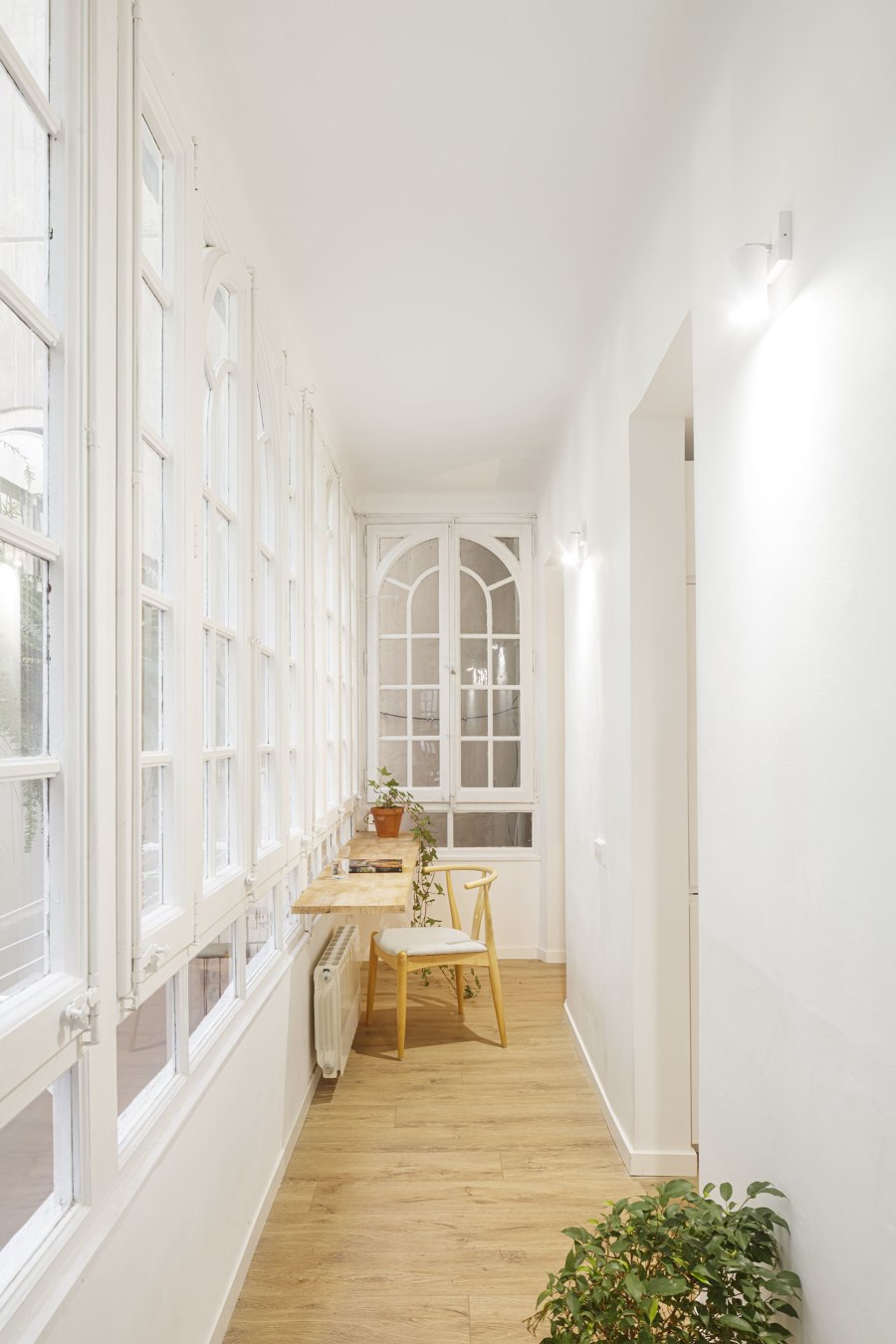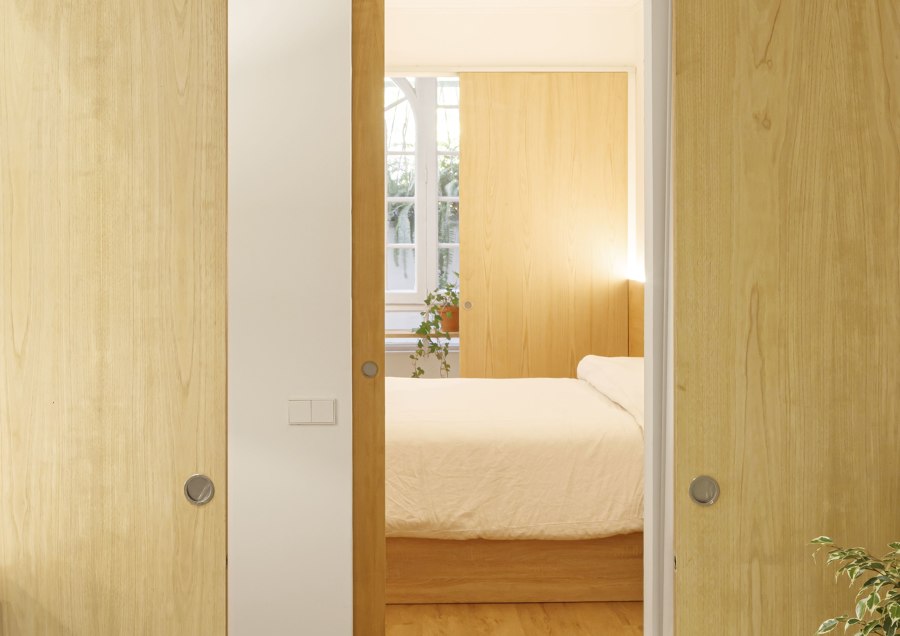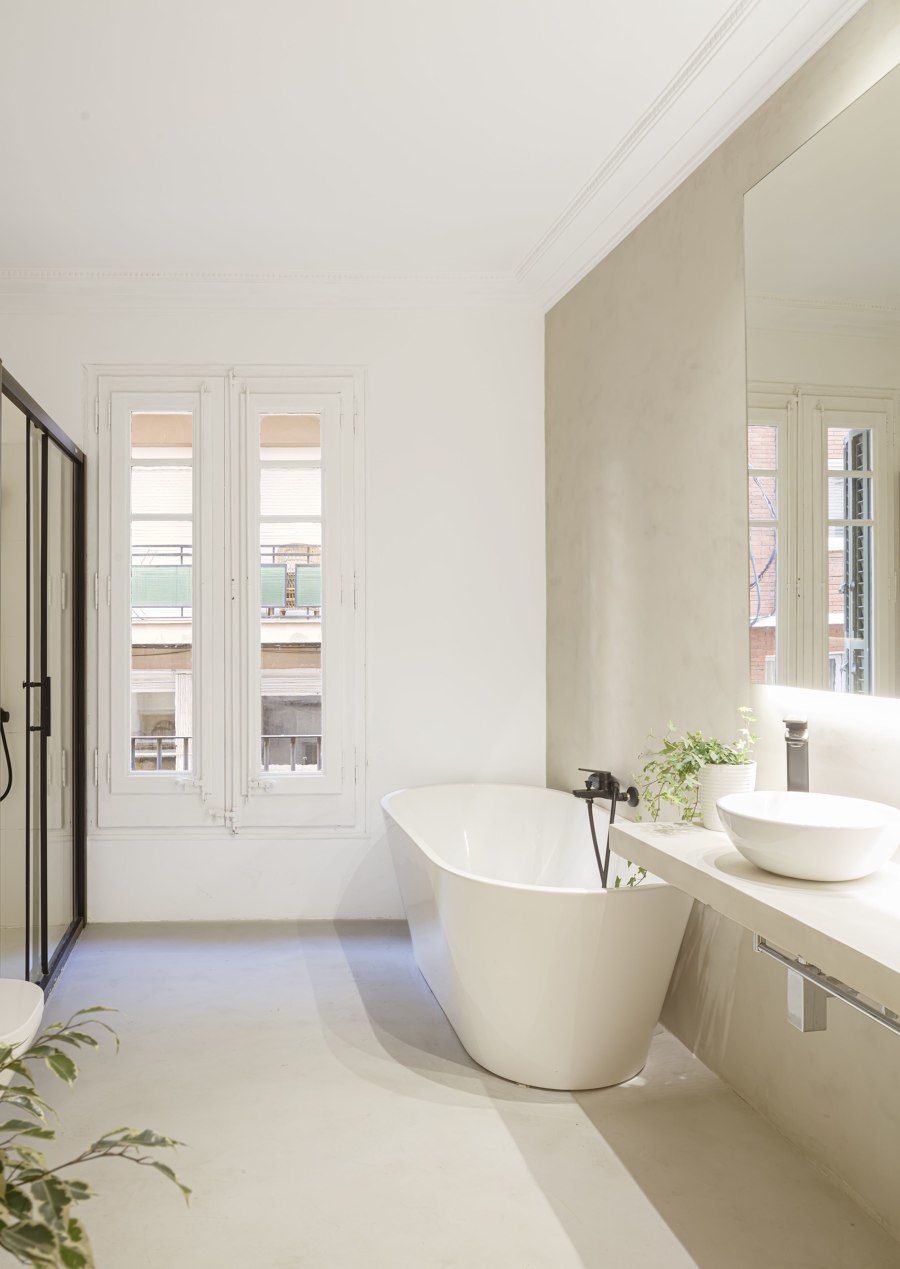The project consists of the renovation of a unique home located in a modernist building from 1932, in the emblematic Barcelona neighborhood of Gràcia. It is a 100 square meters home for a couple who work mainly from home, with the possibility of starting a family in the future.
The design proposes two strategies that give a new architectural identity to the place. The first design decision establishes continuity between the street-facing façade and the interior of the block, through a succession of interconnected rooms for interchangeable use. This is a concept inspired by traditional Japanese houses. The second intervention aims to enhance and recover the different characteristic elements of the Catalan modernist movement, giving rise to a new atmosphere where the new and the old blend in harmony.
Structure and program. The original house was completely compartmentalized with corridors and rooms barely connected to the exterior. The first intention was to open up the space and recover the ceramic vaulted ceiling, demolishing existing walls and false ceilings. The design takes advantage of the existing structure of the building, formed by a sequence of five load-bearing walls perpendicular to the street, to create a simple and poetic language that generates a flexible program.
New openings were made with structural reinforcements, to create four bays that connect the street with the interior of the block. The first bay houses the main bedroom-dressing room-bathroom-gallery, the second the living-dining-kitchen-gallery, the third the hall-distributor-bathroom, and the fourth the two future children's bedrooms. This way, a greater perception of visual amplitude is generated, while promoting natural cross-ventilation. The project seeks to optimize the energy efficiency of the house, as well as promote the incidence of natural light in the deepest areas of the dwelling.
All the boundaries between the different spaces, except the entrance door, consist of sliding chestnut doors that glide in front of the white walls. This system creates flexible and diffuse boundaries that give rise to a dynamic composition where the rooms can be related, totally or partially, to each other. When the doors are closed, each room is an entity in itself, while when the doors are open, each room is part of a unit. The doors expand or contract the space while providing privacy to the users. In the kitchen, slender glass sliding doors promote the incidence of natural light from the gallery, allowing for acoustic insulation from the living-dining room area.
Modernism and materiality. The design highlights the original architectural heritage, recovering the identity of the modernist building elements. Existing ceramic vaults and old ceilings with moldings are restored, seeking harmony with the new project materials. The presence of white walls gives more light to the space, while the wood of the sliding doors and the flooring create a warm atmosphere.
In the main bathroom, the micro cement walls and flooring create a cohesive and harmonious design with the high ceilings adorned with moldings. The freestanding bathtub stands as a sculptural ceramic element that aligns with the formal language of bath bowls. Another characteristic element of the modernist movement is the gallery formed by arched glazed wooden carpentry. These carpentries, together with the rest of the windows of the house, are restored and painted white, maintaining their singular aesthetic character and highlighting the memory of the place.
Design Team:
Roman Izquierdo Bouldstridge
